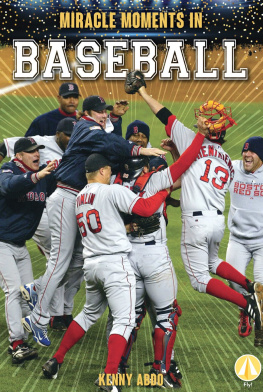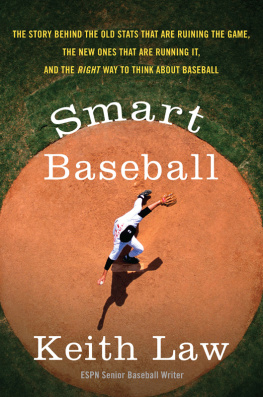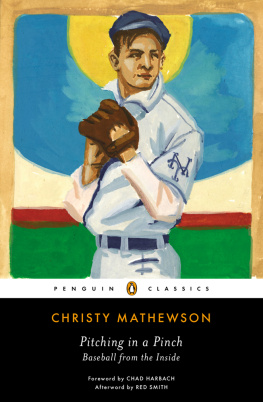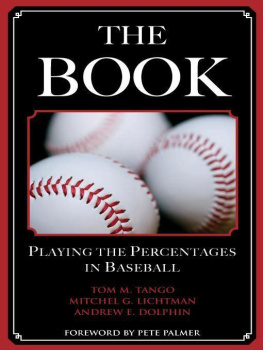Thank you for downloading this Simon & Schuster eBook.
Join our mailing list and get updates on new releases, deals, bonus content and other great books from Simon & Schuster.
C LICK H ERE T O S IGN U P
or visit us online to sign up at
eBookNews.SimonandSchuster.com
We hope you enjoyed reading this Simon & Schuster eBook.
Join our mailing list and get updates on new releases, deals, bonus content and other great books from Simon & Schuster.
C LICK H ERE T O S IGN U P
or visit us online to sign up at
eBookNews.SimonandSchuster.com

Simon & Schuster
1230 Avenue of the Americas
New York, NY 10020
www.SimonandSchuster.com
Copyright 2016 by Brian Kenny
All rights reserved, including the right to reproduce this book or portions thereof in any form whatsoever. For information, address Simon & Schuster Subsidiary Rights Department, 1230 Avenue of the Americas, New York, NY 10020.
First Simon & Schuster hardcover edition July 2016
SIMON & SCHUSTER and colophon are registered trademarks of Simon & Schuster, Inc.
For information about special discounts for bulk purchases, please contact Simon & Schuster Special Sales at 1-866-506-1949 or .
The Simon & Schuster Speakers Bureau can bring authors to your live event. For more information or to book an event, contact the Simon & Schuster Speakers Bureau at 1-866-248-3049 or visit our website at www.simonspeakers.com.
Interior design by Ruth Lee-Mui
Jacket design by Michael Nagin
Jacket photograph by Deborah Feingold for Simon & Schuster
Library of Congress Cataloging-in-Publication Data
Names: Kenny, Brian, 1963
Title: Ahead of the curve / Brian Kenny.
Description: First Simon & Schuster hardcover edition. | New York : Simon & Schuster, [2016] | Includes bibliographical references and index.
Identifiers: LCCN 2015039474 (print) | LCCN 2015046188 (ebook) | ISBN 9781501106330 | ISBN 1501106333 | ISBN 9781501106361 (ebook) | ISBN 9781501106361 ()
Subjects: LCSH: BaseballUnited StatesMiscellanea.
Classification: LCC GV867.3 .K46 2016 (print) |
LCC GV867.3 (ebook) | DDC 796.357dc23
LC record available at http://lccn.loc.gov/2015039474
ISBN 978-1-5011-0633-0
ISBN 978-1-5011-0636-1 (ebook)
To the love of my life, my girl, my wifeNicole Jacqueline Kenny. I love you with all my heart.
Preface
Somewhere along the line, we just stopped thinking. In the most basic ways we all spoke about baseball, a purposeful ignorance set in, reflecting a fascinating part of our own nature. We are all too easily stuck in our own habits, swayed by bias, allowing emotion and laziness to overrule our intellect. Inertial reasoning is a powerful thing. We have received considerable baseball wisdom from the early days of childhood. We have also received it from powerful forces: our adult role models, our peers, the media, and the baseball industry itself.
What is so fascinating is that all this nonsense survived in spite of the following:
1. Baseball is played in the most public forum possible, in front of a wide audience.
2. Baseball discussion and analysis have been encouraged, not discouraged, for decades.
3. The sport itself is an extremely competitive endeavor, with heavy incentives for winning.
So we have something happening right in front of us. Something we think about and discuss on a daily basis at least six months a year. An industry where strategy and information are vital. And yet for nearly a century, no one ever bothered to think about it deeply enough to give themselves an incredible competitive advantage, even when presented with the information.
Batting average, errors, pitchers getting their own wins to take home with them like prizesit once did make sense. At a certain pointabout the time we discovered penicillinit was time to evolve past these 19th-century town-ball relics. Instead, our collective thinking calcified and then endured decades beyond its point of usefulness.
How did this happen?
1
The Herd
The group mind does not think in the strict sense of the word. In place of thoughts it has impulses, habits and emotions.
Edward Bernays, Father of Modern Public Relations
There is safety in the pack. One must understand this to completely understand why it is so difficult to act independently. To adopt new methods is not just to stray from the pack, but to mock the herd itself. For this, there are repercussions. The herdlarge, powerful, belligerenthas ways to deal with rogue operatives.
In football, a sport seen as a quasi-military exercise, innovative head coach Bill Walsh was routinely called a genius. It was done as a tribute to his creative play calling. In baseball, a sport laden with tradition, innovative manager Tony La Russa was also referred to as a genius. It was done to mock him.
Football culture, unlike baseball culture, has welcomed the idea of intelligence as a tactical practice. Its seen as necessary, even manly. Coaches are lauded for attacking in new ways, like a brilliant general. Yet even in football, the herd mentality is difficult to shake. ESPN.coms excellent columnist Gregg Easterbrook once asked Don Shula if there was an innovation left in football. Shula said, Someday there will be a coach that doesnt punt.
Over the last decade, the practice of mindless punting has decreased. Patriots head coach Bill Belichick, though, has been able to maintain an almost automatic advantage over other clubs by frequently going for it on fourth down.
David Romer, an economics professor at the University of California at Berkeley, churned out a mind-blowing study on the folly of incessant punting in 2005. Studying NFL data, Romer concluded you should go for it on fourth down in the following circumstances:
1. Inside your opponents territory, on fourth and seven or less.
2. Inside your opponents 33, on fourth and 10 or less.
3. Fourth and four or less, anywhere on the field.
So, given the statistics, why do NFL coaches keep punting? Because that is what has always been done.
In life and in sports, its easier to stay within the herd and fail than go out on your own and succeed. An innovative coach can insulate himself from a herd backlash by winning, but woe to him when the pendulum swings. If he begins to lose, he will not be one of the guys. Going against the herd is not a career path for the timid.
Reverential of its tradition, the baseball culture eyes innovation even more warily. The baseball equivalent to punting is bunting. Both are seen as automatic moves.
Lets set the scene. The leadoff man gets on. You have a choice, let your next batter hit away or have him bunt. The manager stands on the top step, giving the sign to bunt. The batter squares up, the fielders are in motion, and the runner is primed to move. Here is the skipper, the leader of men, taking matters into his own hands, initiating a lot of action, with his players fully engaged. Unfortunately hed be much more productive if he just sat on the bench and did nothing.
Heres why: With even a successful bunt, you are giving up an out. It feels goodyou can actually see your base runner move closer to scoring. What you dont see is that one third of your resources have been spent.
Heres what bunting actually does in this situation:
Run ExpectancyBased on 19932010 Scoring Environment
Situation | Runs Expected |
Man on 1st, no outs | 0.94 |
Next page















